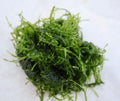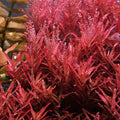Popular Tank Sizes and Its Pros and Cons
One of the most critical decisions when starting the aquascaping journey is selecting the size of your tank. It is the most vital step whether you are a newbie or a veteran in aquascaping. Listed below are the popular tank sizes and its pros and cons.
5-Gallon Aquarium:
A 5-gallon aquarium is ideal for those who love nano fish or shrimp. Here are the pros and cons:
Pros:
Compact and versatile; fits on desks, bookshelves, and nightstands.
Cost-effective setup, with starter kits available for under $75.
Easily movable when drained, making it suitable for rearranging.
Cons:
Limited to small fish or shrimp species.
Requires diligent maintenance due to its smaller size.
10-Gallon Aquarium:
A 10-gallon tank provides more room for fish and allows for a broader range of options. Pros and cons include:
Pros:
Versatile and budget-friendly.
Suitable for a variety of small fish, including bettas.
Convenient for beginners.
Cons:
Still limited to small fish and not suitable for larger species.
Maintenance required to keep water quality optimal.
20-Gallon Aquarium:
A 20-gallon tank extends your options for fish and is a stepping stone to more substantial setups. Consider these points:
Pros:
Slightly larger footprint with more possibilities.
Room for small community fish.
Great for sponge filters but can accommodate power filters too.
Cons:
Limited to smaller community fish.
Requires sturdy support due to increased weight.
29-Gallon Aquarium:
A 29-gallon tank offers more options, especially when it comes to fish selection. Remember these factors:
Pros:
A wide range of filter choices, including hang-on-back filters and internal filters.
Space for larger community fish and some dwarf cichlids.
Cons:
Requires strong structural support due to the tank's weight.
40-Gallon Breeder Aquarium:
A 40-gallon breeder tank offers a unique footprint that's excellent for aquascaping and breeding projects:
Pros:
Great for aquascaping and breeding projects.
Versatile with both power filters and sponge filters.
Cons:
Limited fish choices but ideal for medium-sized community fish.
55-Gallon Aquarium:
A 55-gallon tank introduces more options for your fishkeeping hobby. Key points:
Pros:
Greater variety of fish suitable for this tank size.
Room for larger fish like oscars, gouramis, and smaller cichlids.
Requires stable structural support due to increased weight.
Cons:
Still requires frequent maintenance for optimal water quality.
75-Gallon Aquarium:
A 75-gallon tank opens up further opportunities for fish selection and aquascaping:
Pros:
Versatility in fish choices.
Potential for tall fish species and exciting aquascapes.
Recommended for hang-on-back filters or large canister filters.
Cons:
Requires strong support and consideration for placement due to substantial weight.
125-Gallon Aquarium:
A 125-gallon tank is a favorite among many fishkeepers due to its versatility:
Pros:
A wide range of fish options, including larger species like oscars.
Potential for stunning aquascapes.
Ideal for canister filters and powerful filtration systems.
Cons:
Considerable weight necessitates sturdy support and appropriate placement.
150-Gallon Aquarium
A 150-gallon tank offers an extra dimension with its height and depth:
Pros:
Extended space for tall fish species and unique aquascapes.
Suitable for larger fish populations.
Canister filters are the preferred choice for efficient filtration.
Cons:
Requires robust structural support due to its significant weight.
Bigger Aquariums Are Easier
In general, larger aquariums are easier to maintain. They provide more space for fish to thrive and disperse waste. Smaller tanks get dirty faster, leading to algae blooms and odor. While maintenance is still required for larger tanks, it is less frequent than for smaller ones.
Selecting the right aquarium size depends on your preferences, space, and available time for maintenance. Larger tanks offer more flexibility and ease of maintenance, while smaller tanks are suitable for specific setups. Regardless of your choice, remember that each tank size has its unique appeal and offers exciting possibilities for your fishkeeping adventure.
















